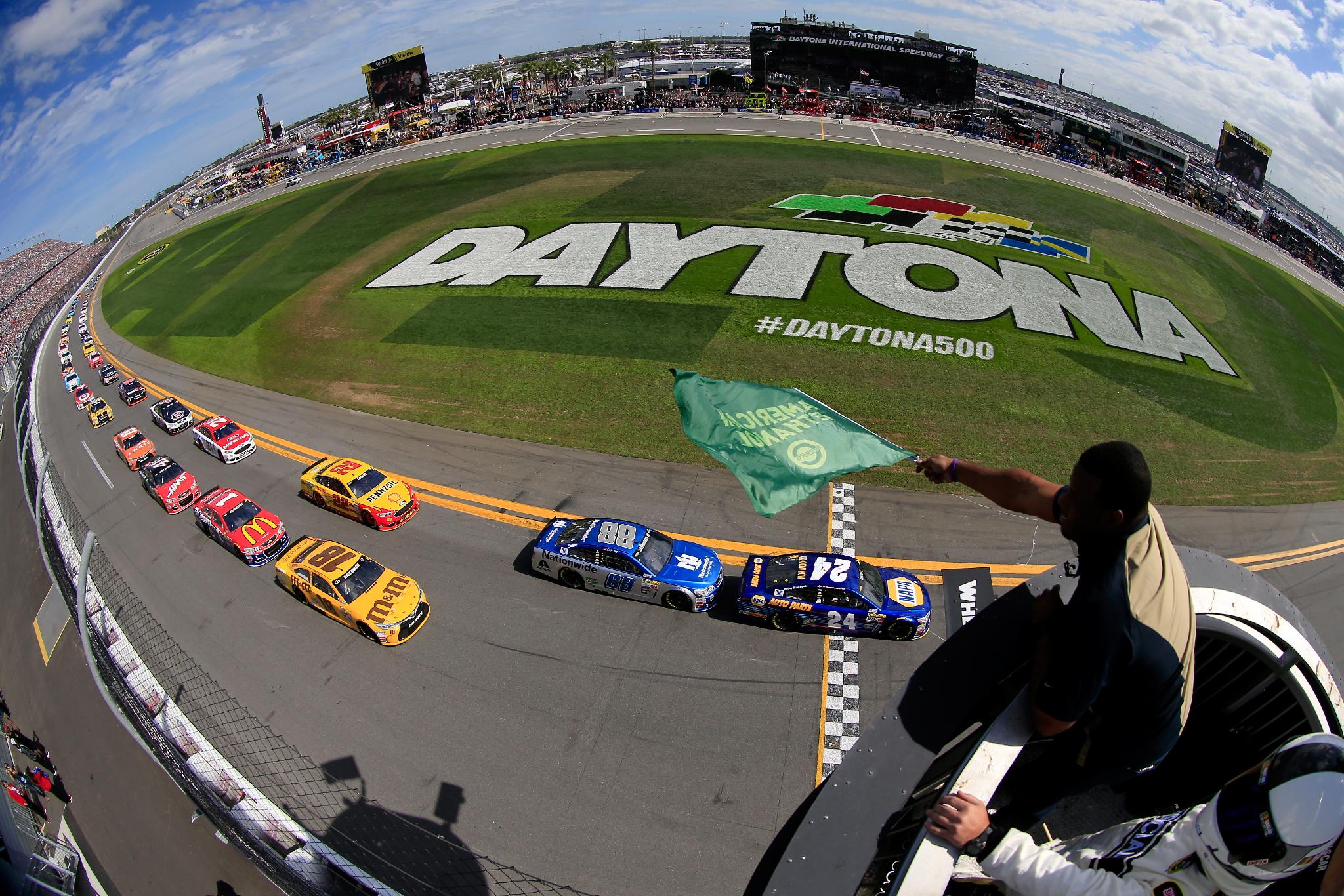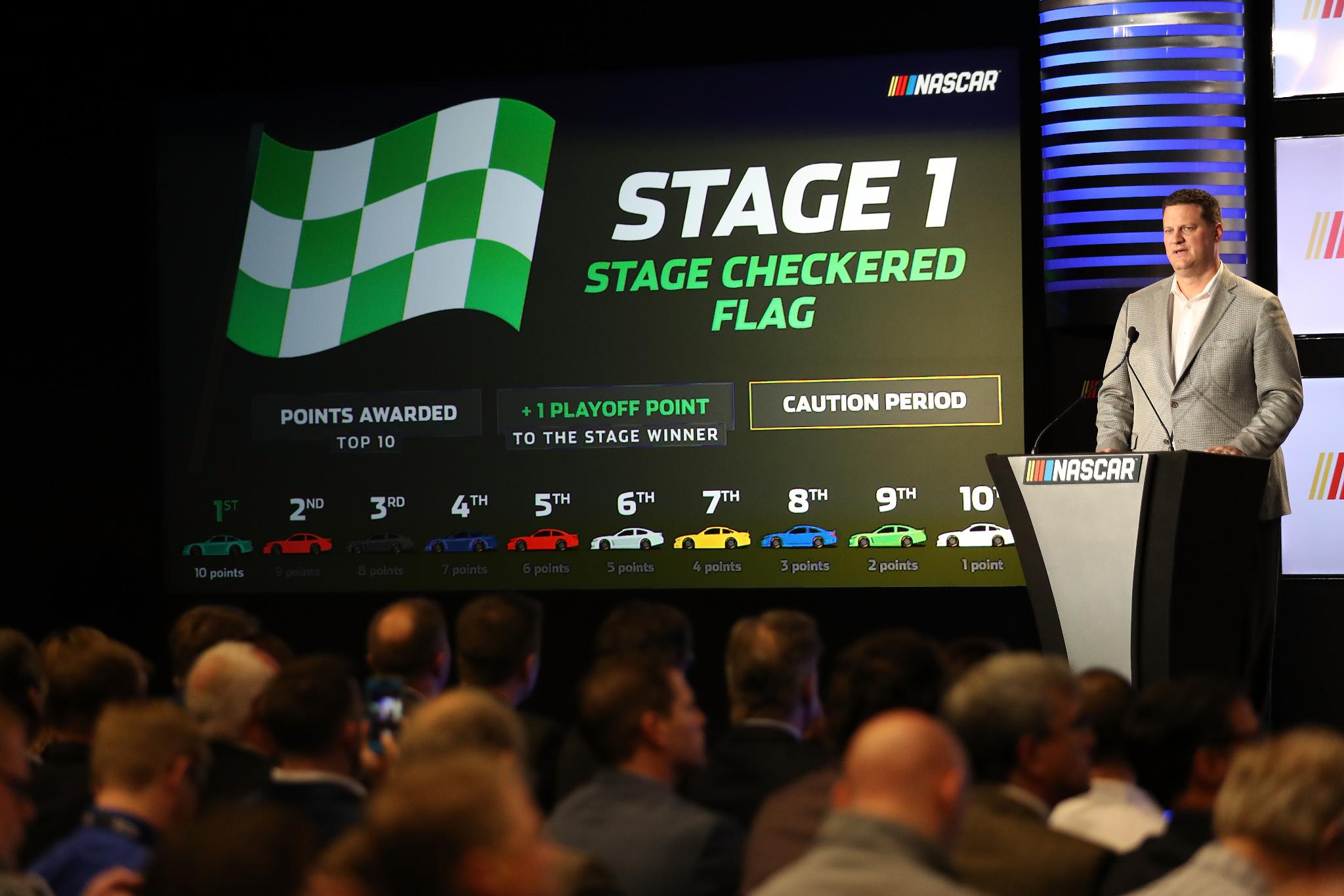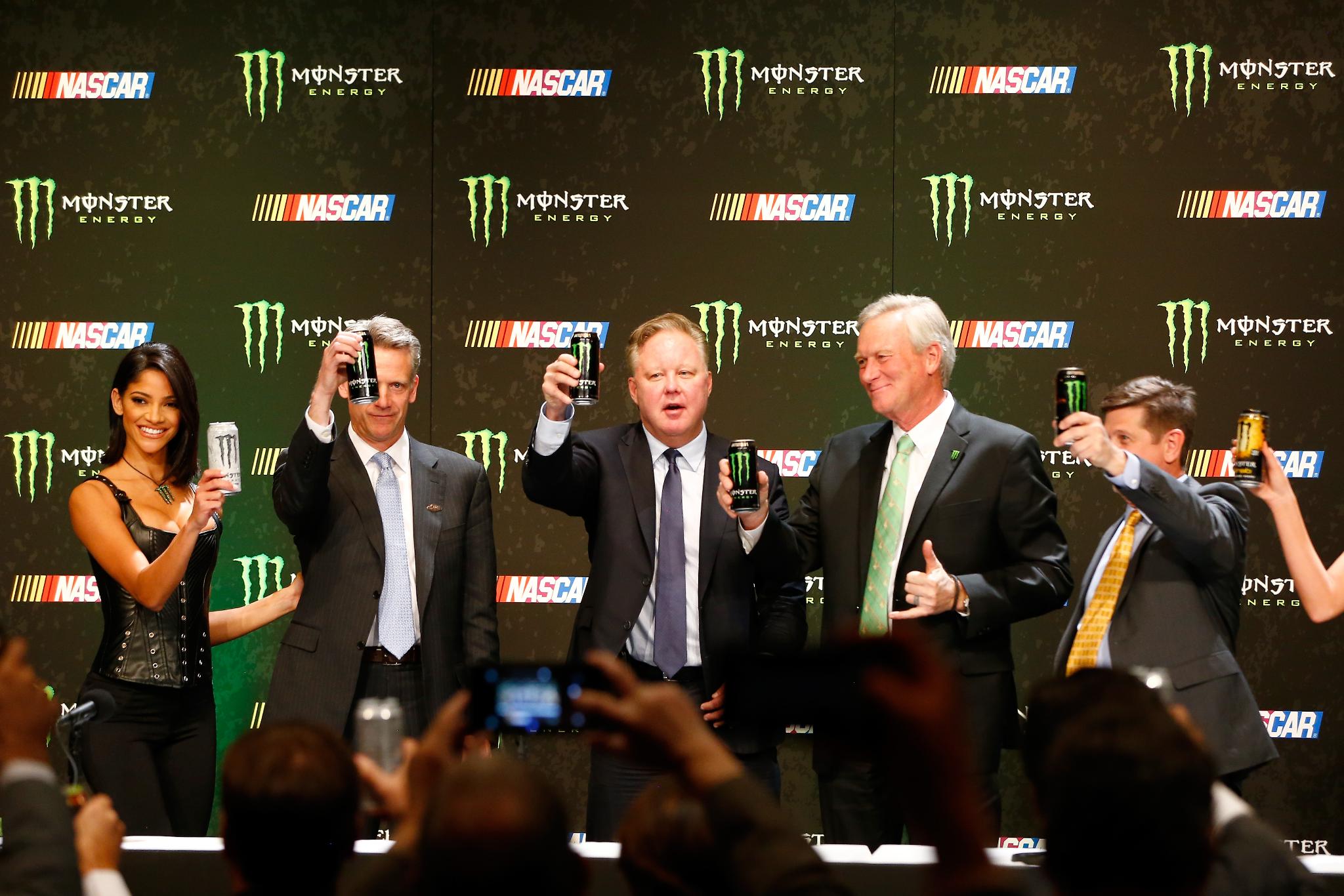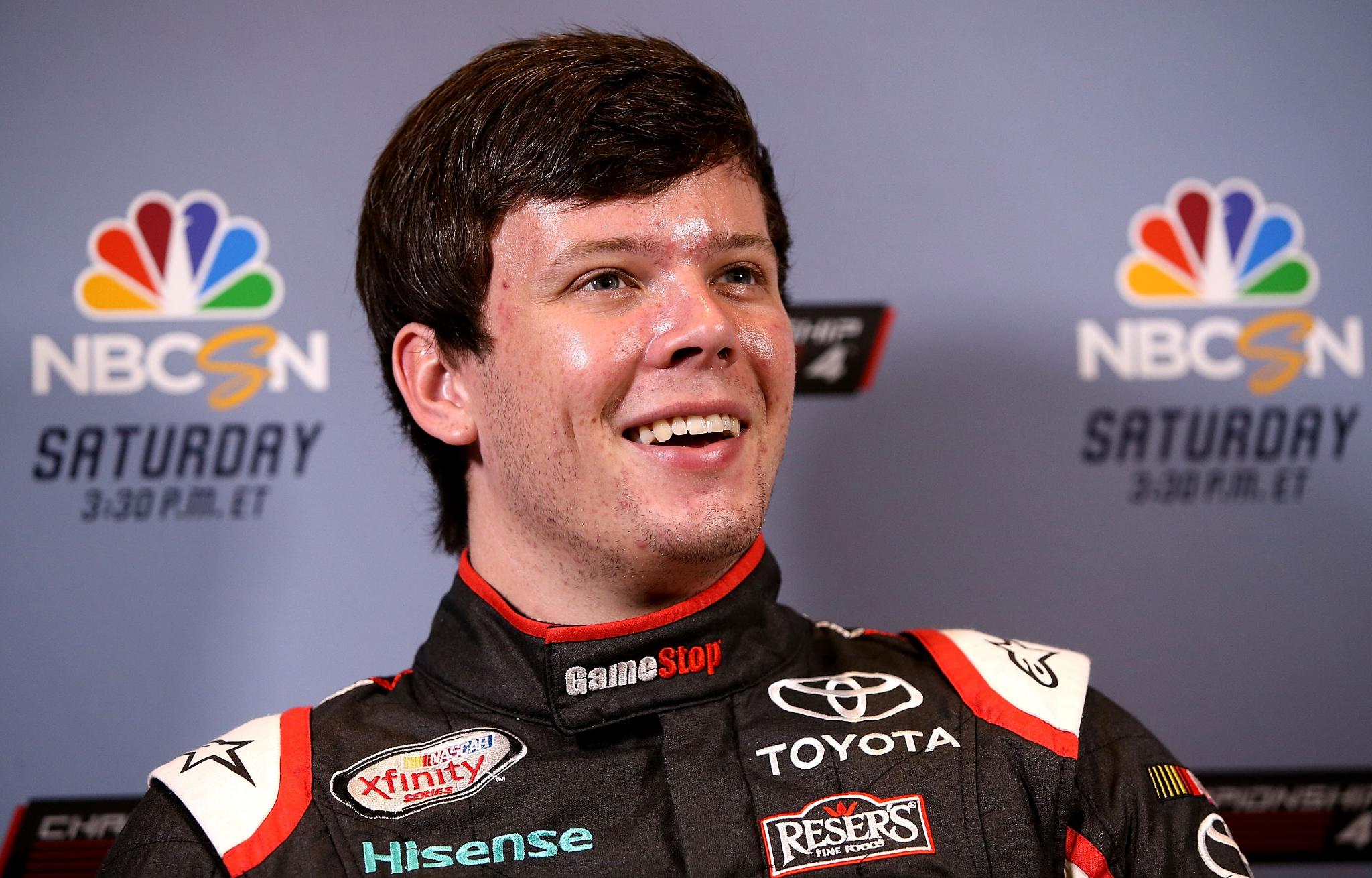2017 To Be A Season Of Change In NASCAR
 |
| 2017 is going to be a season of change for NASCAR |
The 2017 NASCAR season is shaping up to be one of the most unique we've seen in recent history with a sea of changes that have even the most-seasoned NASCAR aficionado's looking confused.
Once again, NASCAR has shaken up the championship format and taken it one BIG step further by changing the race formats themselves. If that wasn't enough, they have a new title sponsor for their premiere series and another crop of young rookies looking to stake their place in NASCAR history.
It's going to be a wild ride. Let's take a look at what's new, shall we?
NEW RACE FORMATS
In what could very well be the biggest change the sport has seen since the "Modern Era" began, the big news maker of the off-season was, of course, the new race format being introduced among all three of NASCAR's major touring series.
Races that were once mind-numbing 400-lap games of "Follow the Leader" will now be broken down into three, shorter games of Follow the Leader, or segments. Oh, and at the end of each "segment", the "segment winner" will receive points and maybe a nice trophy like the kind a third-grade girl's soccer team would get for "participating".
It's just another gimmick from the mind of NASCAR CEO and Chairman Brian France – ostensibly his latest attempt to bail water out of a sinking ship that he himself torpedoed.
I won't get into the nuts and bolts of how the new race formats and championship points system works, heck, even I don't understand all of it.
 |
| NASCAR unveiled the new race formats back in January |
| Chris Graythen/Getty Images |
To put it simply -in this day and age of instant downloads and social media, our attention spans have grown so short that we can't follow an entire 400-lap race. So NASCAR is going to pare it down into segments.
But the real crux of the issue is that NASCAR isn't doing this to benefit the fans, nor are they doing it to benefit the drivers, the teams or the manufacturers.
No, these radical changes are being made to placate another constituency more near and dear to NASCAR's heart -sponsors and television partners.
That's right -this is all being done for better TV and sponsorship money. How dare they??
Actually, NASCAR kowtowing to sponsors and media partners is not unprecedented.
For years, the season-ending race was fairly anti-climatic as the championship was clinched weeks earlier, such as in 2001 and 2003. It wasn't until the season-ending race shifted to Homestead-Miami Speedway that NASCAR contemplated changing the championship format, and thus "The Chase" was born in 2004 to guarantee the title would be decided in the final race of the season
It's no coincidence that the introduction of "The Chase" came just two years after the Ford Motor Company signed on to become title sponsor of the final race of the year in all three series – dubbed "Ford Championship Weekend" -and it was obvious who benefited from having the title decided in the final race of the season: not the drivers, not the owners, not even the fans….but the sponsors and the television partners. NASCAR had a shiny new TV deal they signed back in 2001 they were looking to extend, and what better way to add some excitement to the final 10 races of the season than to make in a playoff format? A perfect made-for-TV spectacle.
[adinserter name="GOOGLE AD"] Ford benefited as well, of course, after all, that's why they shelled out the money to sponsor the final race of the season in the first place. Now, the entire season would be decided in one single race. Excitement, yes?
Such as it was when NASCAR introduced "knockout" elimination-style qualifying in 2014 to replace the single-car format that had been in place since…well, forever. NASCAR didn't come up with that to appease the fans; they certainly didn't do it to make the drivers happy. No, they did it because the broadcasters who were televising qualifying told NASCAR that single-car qualifying was like watching competitive knitting. They needed…excitement (there's that word again) – some drama to spice up what is in reality a pretty mundane part of a typical race weekend.
So that brings us to the 2017 season, and NASCAR again has a shiny new TV that would even make Mr. Burns from The Simpsons envious. But just two years into that new TV agreement, NASCAR's media partners were howling at the ratings numbers. They were in the basement, at least compared to what they were expecting. Something had to be done, and they said so, loudly, to the leadership at NASCAR at a meeting during the season-ending awards banquet in Las Vegas, and thus another new championship format was hashed out -and the concept of the "segments" was born.
I wonder if this is the vision of stock car racing Bill France Sr. had in mind when he first looked out over that track laid out on the sand in Daytona Beach in 1946.
NEW TITLE SPONSOR
 |
| Brian France helped bring in Monster Energy to sponsor the Cup Series |
| Jonathan Ferrey/Getty Images |
For just the third time in their history, NASCAR has a new title sponsor for their top-tier series, unveiling energy-drink maker Monster Energy as the new sponsor of the Monster Energy NASCAR Cup Series (or MENCS, as it's being called). The beverage maker -partly owned by Coca-Cola -is already heavily involved in sports sponsorships and is no stranger to marketing itself to fans of extreme sports, so it seems like a perfect fit. If not the only fit NASCAR could find.
And Monster has some big shoes to fill if they hope to replace the marketing juggernaut that Sprint proved to be during their time as the Cup Series title sponsor.
The Nextel/Sprint sponsorship was the perfect fit at the perfect time. NASCAR was working to shed its Southern-sport image and move into the mainstream of American sports -what better partner than a telecommunications company? With Nextel -and later, Sprint -NASCAR had an entitlement sponsor that could push their brand through countless platforms. And Sprint delivered, plastering NASCAR everywhere they could -cel phone apps, television ads, YouTube channels -and reaching millions of new fans in the process.
For the first few years of Sprint's tenure, NASCAR enjoyed an unprecedented wave of popularity, but then the bottom dropped out amid the global economic crisis in 2008.
Sprint weathered the storm better than most – mainly because it seems that even in a recession; people are more willing to go without other things than their cel phones. NASCAR, on the other hand, saw attendance numbers drop like a brick and sponsors pulling back in droves. Even now, nearly ten years later, motorsports in general is still dangling on the edge of an economic precipice.
[adinserter name="GOOGLE AD"] In 2014, Sprint announced they would not be renewing their deal after the 2016 season, leaving NASCAR the task of finding a new title sponsor.
No one can say for sure why Sprint decided to pull out of NASCAR, but likely they didn't want to commit to ponying up another $100 million to renew their deal, which is the number NASCAR was reportedly asking for.
There aren't many companies with pockets that deep looking to sponsor a sport with declining TV ratings and below-average attendance, and as the 2016 season started to wind down with no announcement of a new sponsor, many wondered if NASCAR was able to find a sponsor at all.
In November, of course, NASCAR announced Monster as the new title sponsor for the Cup Series. While it's clear NASCAR didn't get the deep-pockets they were hoping for, Monster is certainly no stranger to extreme sports -sponsoring everything from BMX to snowmobile racing. Monster's core demographic are young, athletic, adrenaline junkies. You know, people who like excitement. Yep, there's that word again.
Monster Energy brings a fresh fanbase, but can NASCAR deliver for those new fans? Time will tell.
Monster Energy is reportedly paying up to $20 million for their title sponsorship -a far cry from what Sprint was paying -and the deal is rumored to only be for two years with an option for two more, but one has to wonder if NASCAR's product on the track doesn't improve soon that they'll be right back looking for another sponsor in 2019.
NEW BLOOD
 |
| 2015 Truck Series Champion Erik Jones is among three drivers vying for Rookie of the Year honors in 2017 |
| Sean Gardner/NASCAR via Getty Images |
NASCAR's Rookie of the Year battle used to be an annual rite of a passage for all the up-and-coming drivers who hoped to make their mark at the top level of stock car racing. One only has to look at the some of the names of past rookie of the year winners -Donnie Allison, Dale Earnhardt, Jeff Gordon, Tony Stewart and Andy Lally??
OK, so not every rookie class is has been chockfull of breakout stars. But the start of the new millennium gave us the "Young Guns" of NASCAR, like Jimmie Johnson (yes, he was "young" once), Dale Earnhardt, Jr. and Kasey Kahne. The 2006 rookie battle featured a stout lineup that included Clint Bowyer, Martin Truex, Jr. and eventual ROTY Denny Hamlin.
THIS season's rookie of the year battle is shaping up to be a one of the most competitive we've seen, with former Joe Gibbs Racing teammates Daniel Suarez and Erik Jones facing off along with third-generation NASCAR driver Ty Dillon.
But this underlying story of this year's rookie class has to do with how this rookie class came together. For Suarez, racing in Cup might have been on his radar, but not for another year or too, but Carl Edwards surprise retirement in January helped promote Suarez to the big time.
Dillon too, takes over a ride from a veteran driver as Casey Mears parted ways with his old team so they could go with Dillon, who brings with him some financial incentives from his grandfather Richard Childress' team.
Erik Jones found no room at the inn at Joe Gibbs Racing, so a new team was carved out from him over at Furniture Row Racing, who share a technical alliance with JGR, essentially making Jones -and teammate Martin Truex, Jr. -both satellite JGR drivers.
Add to those the list of drivers who have been put out to pasture in 2017 -some of them willingly, some not -and you see a strong shift in what teams are looking for in a driver: out with the old, in with the new.
With sponsor money at a premium these days, veteran drivers like Mears and Greg Biffle -a two-time champion, mind you – suddenly find themselves on the outside looking in, in sport where youth is king. The average age of the drivers in this Sunday's Daytona 500 (minus the part-timers) is just a shade over 30. In the lower-tier series, the average age is even lower, at around 27 years old on average.
[adinserter name="GOOGLE AD"] The sport has also lost several experienced veterans, such as Jeff Gordon, Tony Stewart and Edwards -all of whom have retired.
And it's not so much the age of some of these drivers as it is the politics of getting a ride in NASCAR that have changed the landscape of the sport. Gone are the days when you show up at your local dirt track hoping to work your way up to the top. Nowadays – money talks.
Recently, a story emerged about how Kyle Larson had to buy his way into a ride at Ganassi, and had to bring a sponsor with him to do it. Up-and-coming drivers like Austin Cindric and Cole Custer have fathers who work as executives at race teams. Others, like Chase Elliott and Austin and Ty Dillon have their family names behind them.
And then there are drivers who simply bought their own ride like Jon Wes Townley, whose only real talent seemed to be getting his dad to keep writing checks despite wadding up more vehicles than a Fast and Furious sequel.
The current age of NASCAR's future crop of stars might fit nicely into their demographic -especially with Monster Energy on board, it's just further proof that the sport is drifting farther away from its core fanbase, who seem to find themselves put out to pasture along with the drivers they spent years rooting for.
